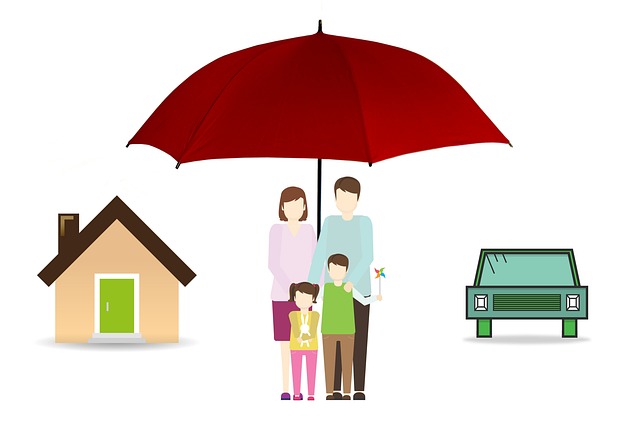Explore Storm Shelters to enhance safety
When severe weather threatens, having a proper storm shelter can mean the difference between life and death. These specialized structures offer crucial protection during tornadoes, hurricanes, and other extreme weather events. Understanding the various options available and how they can safeguard your family is essential for anyone living in areas prone to severe storms.

Severe weather events can strike with little warning, making storm shelters a crucial investment for those living in high-risk areas. These specialized structures are designed to withstand extreme conditions, providing a secure space when homes may not offer adequate protection. From traditional underground bunkers to modern above-ground safe rooms, today’s storm shelters offer various configurations to meet different needs and budgets.
Understanding Types of Storm Shelters
Storm shelters come in several distinct varieties, each with specific advantages. Underground shelters, often called storm cellars, provide maximum protection by utilizing the earth’s natural barrier against high winds. These traditional options have been used for generations and remain highly effective. Above-ground shelters or safe rooms can be installed within existing homes, offering accessibility advantages for those with mobility concerns. Prefabricated shelters provide a middle ground, combining relatively quick installation with robust protection. Community shelters serve larger populations and are typically found in public buildings, schools, or designated areas in apartment complexes.
The Benefits of Building a Shelter
Installing a storm shelter delivers numerous advantages beyond the obvious safety benefits. The primary benefit is life protection—storm shelters are engineered to withstand winds exceeding 250 mph and resist flying debris that causes most tornado-related injuries. Property protection is another consideration, as these structures can safeguard valuable documents and irreplaceable items. Many homeowners also experience reduced insurance premiums after installing FEMA-compliant shelters. Perhaps most valuable is the peace of mind that comes from knowing your family has a secure place to retreat during emergencies, eliminating the stress of last-minute evacuation decisions.
Installation Notes for Storm Shelters
Proper installation is critical to ensure a shelter functions as designed during extreme weather. Site selection requires careful consideration of accessibility, flooding potential, and structural integration. For underground shelters, soil composition and drainage patterns must be evaluated to prevent water infiltration. Anchoring systems are particularly crucial—shelters must be securely fastened to concrete foundations to prevent displacement during high winds. Professional installation is strongly recommended, as improper installation can compromise the entire system. Most quality manufacturers offer installation services or can recommend certified contractors familiar with local building codes and FEMA guidelines.
Plan and Continuously Prepare for the Future
A shelter is only as effective as your preparedness plan. Creating a comprehensive emergency plan involves designating responsibilities, establishing communication protocols, and practicing shelter entry procedures regularly. Stock your shelter with essential supplies including water (one gallon per person per day), non-perishable food, first aid supplies, flashlights, batteries, and weather radios. Consider comfort items like blankets and activities for children during potentially lengthy shelter stays. Regularly update your emergency kit, replacing expired items and adjusting supplies based on changing family needs. Document your shelter’s location and share this information with trusted neighbors in case rescue assistance is needed.
Storm Shelter Costs and Options
The investment in a storm shelter varies significantly based on size, type, and installation complexity. Entry-level above-ground safe rooms typically start around $3,000-$5,000, while basic underground shelters generally range from $4,000-$7,000. Custom installations integrated into new construction can cost $8,000-$15,000 or more. Larger community shelters represent major investments, often exceeding $50,000 depending on capacity.
| Shelter Type | Average Cost Range | Key Features |
|---|---|---|
| Above-Ground Safe Room | $3,000-$9,000 | Accessibility, quick entry, can be installed in existing homes |
| Underground Shelter | $4,000-$12,000 | Maximum protection, cooler temperatures, traditional design |
| Garage Floor Shelter | $5,000-$8,000 | Convenient location, space-saving, vehicle can park over it |
| In-Ground Backyard Bunker | $6,000-$15,000 | Larger capacity, separate from home, customizable |
| Community Shelter | $25,000-$150,000 | Serves multiple families, often FEMA-subsidized |
Prices, rates, or cost estimates mentioned in this article are based on the latest available information but may change over time. Independent research is advised before making financial decisions.
Selecting the Right Shelter for Your Needs
Choosing the appropriate shelter requires evaluating several factors including your geographic location, typical weather threats, household size, and property constraints. Areas with high tornado frequency may prioritize underground options, while hurricane-prone regions might consider flood-resistant designs. Accessibility is particularly important for households with elderly members, children, or those with mobility limitations—above-ground options often provide faster access during emergencies. Size requirements depend on your household count, including pets, and the potential duration of shelter use. Professional consultation can help determine the most suitable option for your specific circumstances.
When evaluating storm shelters, look for products meeting FEMA P-320 or P-361 guidelines and ICC-500 standards, which ensure the structure can withstand extreme conditions. These certifications represent the industry benchmark for residential storm shelter safety. Remember that the best shelter is one your family can access quickly—even the strongest structure provides no protection if you cannot reach it in time during an emergency.




